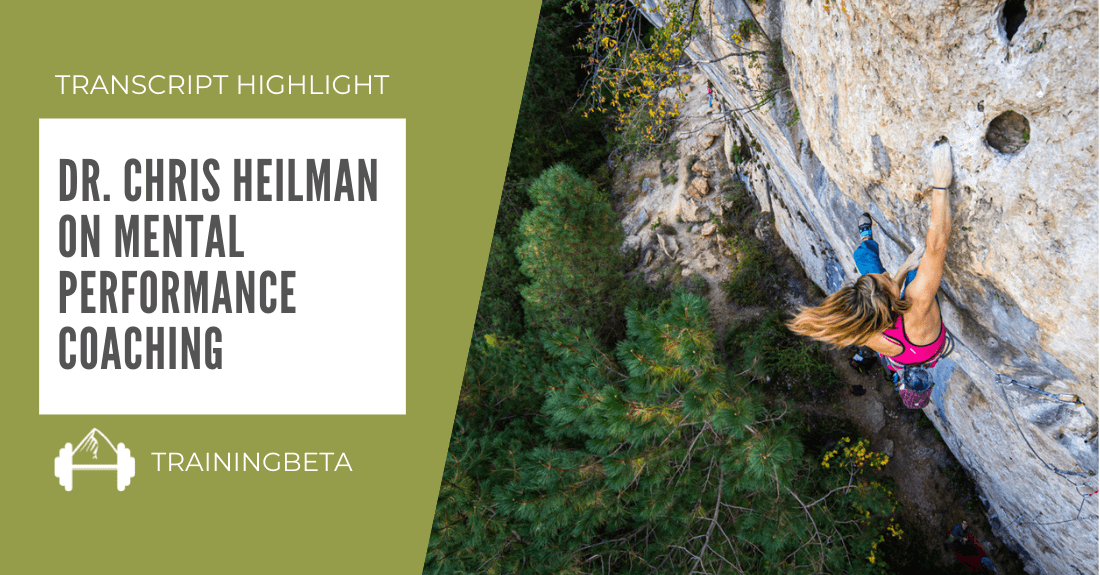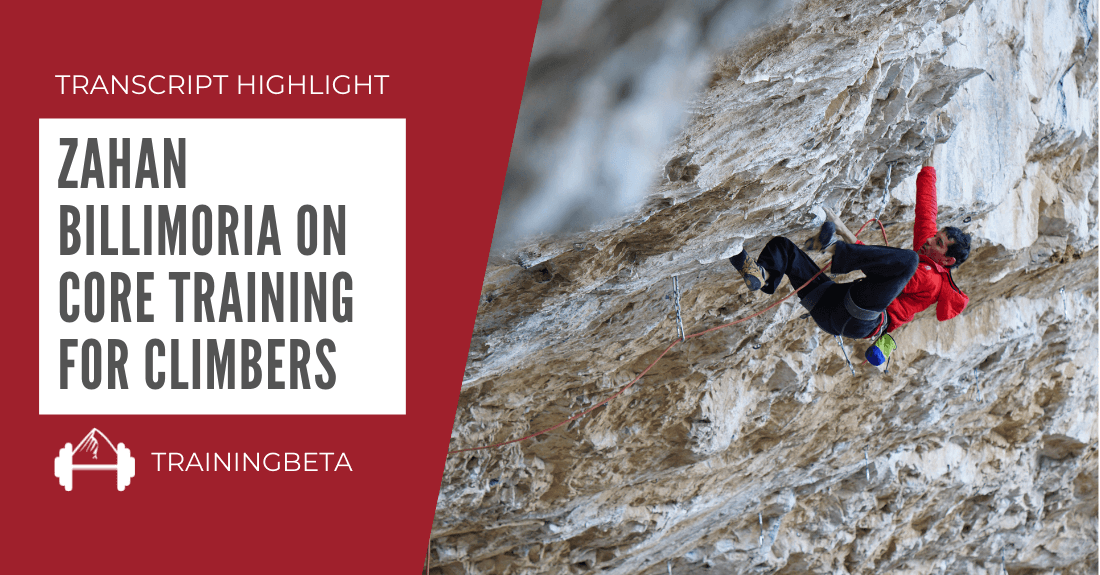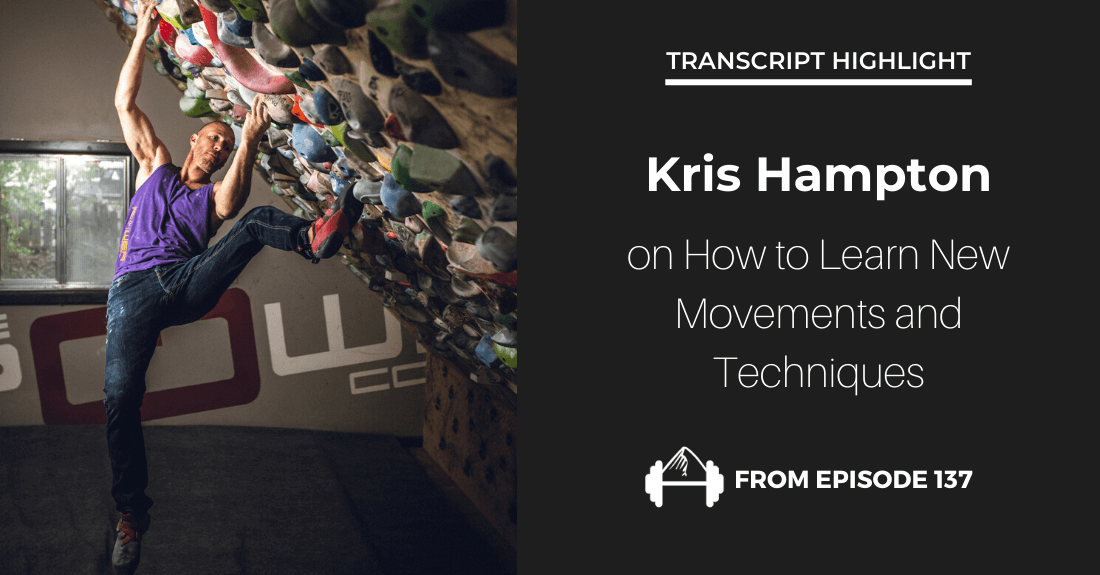Dealing with fear is part of climbing. Unfortunately, a failure to manage fear is one of the things that holds peoples’ climbing back the most. You can train hard, get stronger fingers, and have world-class endurance, but if you aren’t comfortable climbing above a bolt you’re not going to be able to fully leverage your physical abilities into sends.
Now, there are a lot of articles and resources out there about dealing with the fear of falling. Many of them offer step by step advice on how you can build lead climbing confidence through progressive exposure. These are super valuable resources. That said, the simple advice of progressive exposure can disguise the actual struggle and hard work that needs to go into overcoming the fear of falling. To highlight what this work looks like in practice, here’s an excerpt from TrainingBeta Podcast Episode 120 where Brianna Greene outlines the incremental steps she took to confront her fear of falling and fear of trusting her belayer.
What we really want to showcase here is how methodical Brianna was. Even though her goals were sport climbs outside, she started small top roping in the gym and gradually pushed herself outside her comfort zone as her confidence improved. No matter how bad your fear of falling is, this is the kind of consistent and deliberate approach that can help you overcome it.
If you like what you see and want to hear more about Brianna and her journey to 5.12, be sure to check out the full episode/transcript as well as her TraningBeta Article How I Trained For My First 5.12.
Brianna Greene on How Dealing with Fear Helped Her Sport Climbing
Neely Quinn: So you got bored with bouldering and you decided you wanted to be a sport climber but now you have this fear of this person belaying you, which obviously probably took hold in your climbing, right? How did it affect your climbing?
Brianna Greene: I would try to climb on lead and I would become completely paralyzed. I would not be able to climb beyond the next bolt. I would imagine, ‘I’m going to fall and I’m going to die,’ or something like my ankle was going to explode or my leg was going to fall off. I don’t know. It was totally irrational, in a way. I guess it’s somewhat rational because people do get injured sport climbing but any kind of climbing is dangerous.
It was so irrational that I just needed to take a step back and figure out: how can I make this comfortable for myself? What steps do I need to take? What kind of baby steps do I need to set out for myself? I figured I would start leading in the gym and that’s going to be way safer and way more comfortable than climbing outside. I tried and it was still pretty scary to lead in the gym. I felt like I just wasn’t ready for it. It had been so long and I was freaked out. Also, I got injured in the gym so I guess that makes sense.
I started toproping in the gym a lot to get used to sport climbing, just to kind of get high on the wall and partner with somebody and get used to their belay style or whatever. Then toproping, I was like, ‘This is freaky. I’m up on a rope. I’m dangling and I’m really up high,’ but after a while it was like, ‘This is sort of boring. I need more of a challenge. I want a challenge,’ so I started leading on easier stuff. If I would get nervous I would make myself fall. If I’m too nervous to climb any further, I need to fall. I need to just feel what it’s going to feel like to fall because if I’m too afraid to climb further it’s because I’m afraid I’m going to fall unexpectedly so it’s better to just take a controlled fall.
Neely Quinn: Okay, so what about that fear of your belayer? What happened to that?
Brianna Greene: I decided to start climbing with people that I really trust, like my friends that I know are experienced. If there is someone – like my boyfriend, for example, is a really strong boulderer but he doesn’t sport climb very much. Obviously we’re going to climb together so it was kind of like, ‘I don’t know if I trust you 100%. 1) because you boulder all the time and you don’t sport climb very much and 2) because you’re a foot taller than me and you weigh a lot more than me.’
He was super supportive and he was like, ‘Okay, well let’s just take some practice falls.’ Brennan and I would do some practice falls. I would clip above my head so I’d be on toprope and I would just fall. It would be a super soft, easy fall and I think it was good for him, too, because he’s not used to sport climbing in general but also with a tiny person. He’s 50 pounds or more.
Neely Quinn: That’s a big difference. I would be scared, too.
Brianna Greene: Yeah, it was super helpful and I think I got inspired because I was at the gym one day and I saw this Learn to Lead class and they were doing that exact same thing where they would clip above their head, they would take a small fall, and slowly, once they got more comfortable with each other they would climb above the bolt and they would take a bigger fall. We just started doing that until I was like, ‘Okay, I totally trust him now. I’m ready to just get on harder stuff and climb harder sport climbs.’
Neely Quinn: Yeah, I remember climbing with you at that time when you were getting more confident. You were just taking falls all over the place, unexpected, unannounced, and I was like, ‘Damn! She’s so bold,’ and it was actually really inspirational for me.
Brianna Greene: That’s awesome to hear because from my perspective I was so freaked out I was like, ‘I’ve got to fall. I’ve got to just take a fall.’
Neely Quinn: And that’s something that’s interesting, too. I’ve gotten much better about the fear thing but I struggled for a long time with falling, especially with making myself fall. I would go into a session and I’d be like, ‘I’m just going to make myself fall. That’s the whole point of this session.’ Then I would get up there and I just couldn’t. I couldn’t do it. What is it that makes you able to do that to yourself?
Brianna Greene: It’s hard, you know? It’s really hard but I think it’s just baby steps. Everybody has fear, right? Well, most people have fear and I think it’s slowly pushing yourself outside of your comfort zone until those scary things start to feel more comfortable. It’s like if you clip above your head and you tell your belayer, “Okay, I need to take some practice falls,” so you feel more comfortable, essentially you’re on toprope. They can give you a really short catch and then you start getting used to it.
You also need to develop this relationship with your belayer. You need to learn how to fall with that person and they need to learn how to catch you because you have different weights and that affects how you’re going to fall or how much slack you need to give somebody, how much you need to jump.
It’s just kind of like baby steps. Once you get a little more comfortable with that you can climb slightly above your bolt and be like, ‘Okay, now I’m two feet above my bolt and now I’m going to fall and take a slightly bigger fall,’ until you get to the point where you’re like, ‘I’m totally runout and I trust this person now. I’m going to keep going.’ You can’t get to that point until you take all the baby steps leading up to that point.
Full Episode and Transcript: TBP 120: How Brianna Greene Trained to Send Her First 5.12a
(photo courtesy of Juan Diego Reyes)
Other Articles You Might Like:
- Transcript Highlight: Roane Van Voorst and Hazel Findlay on Exercising the “Fear Muscle”
- Top 5 Fear of Falling Articles
- Dave MacLeod and The Fear of Falling
- TBP 023 :: Arno Ilgner on Overcoming Fear and Ego in Climbing







Leave A Comment